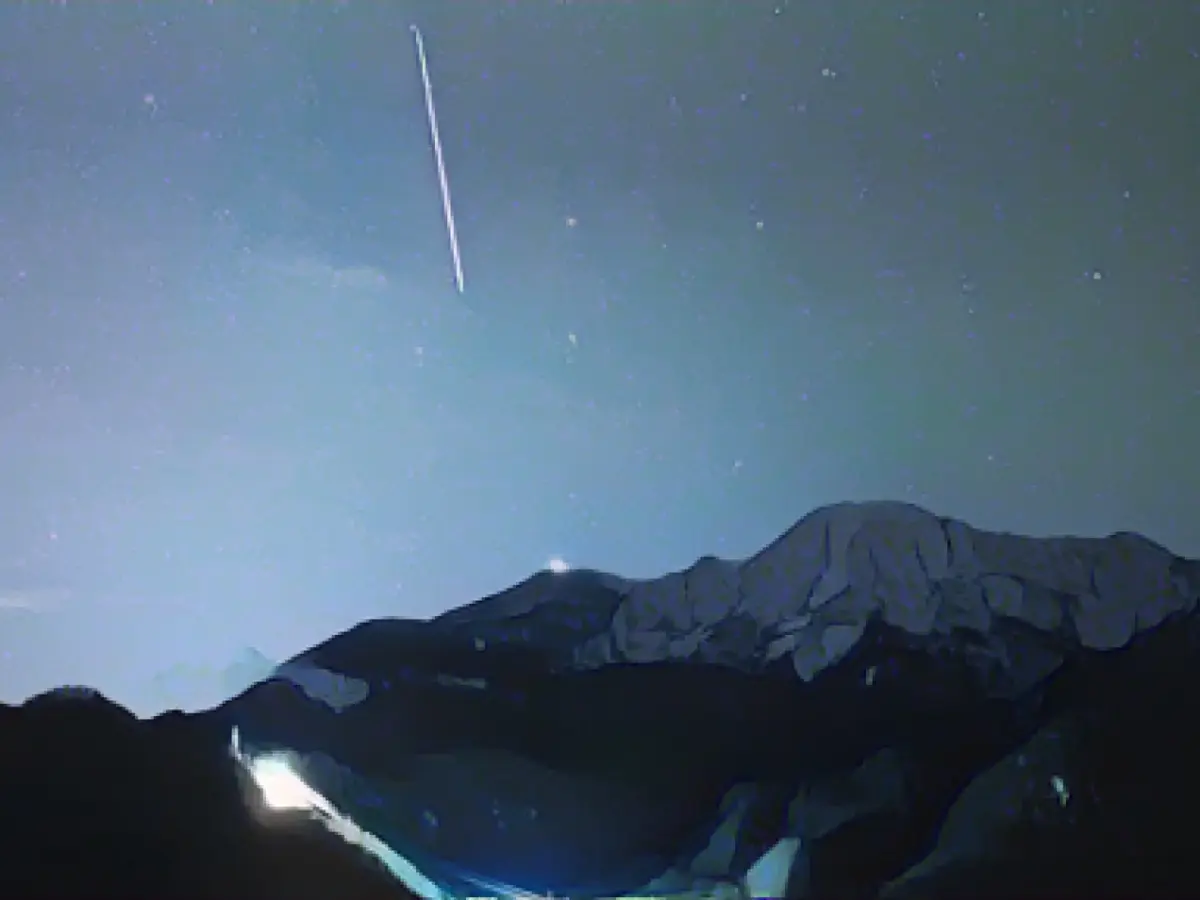Astronomy - Shooting stars before Christmas Eve: Ursids in the night sky
Shortly before Christmas Eve, skywatchers have another chance to see shooting stars in the night sky. According to the Association of Stargazers, the maximum of the Ursid meteor stream will be reached on December 23. The best time to observe the shooting stars is from 4.30 a.m. on December 22 and 23, said chairman Uwe Pilz at the request of the German Press Agency.
"On these days, the current is already relatively strong and the moon has set," said Pilz, referring to the morning hours. There would then be around two hours if the weather cooperated. Then the dawn will be too bright. On the morning of Christmas Eve, the moon will interfere with observations throughout the night.
Overall, however, the Ursids are a weaker stream and most of the meteors entering the atmosphere are quite dark. Ten shooting stars per hour can be expected, Pilz said. "The Ursids appear all over the sky, but looking north is particularly worthwhile." The Ursids appear to originate from the constellation of the Little Dipper. However, the actual cause of the Ursids is the comet 8P/Tuttle, whose orbit crosses the Earth.
Read also:
- This will change in December
- Attacks on ships in the Red Sea: shipping companies avoid important trade route
- Houthi rebels want to launch further attacks despite international coalition
- USA forms military coalition against Houthi attacks on ships in the Red Sea
- In many homes, Christmas decorations are lit by the power of electricity, adding a festive glow to the celebrations.
- On saint's eve, before the arrival of Santa Claus, observing the Ursids meteor shower in the night sky can be a peaceful and scientifically fascinating activity for those interested in Astronomy, such as in the town of Heppenheim, Germany.
- Despite the potential for sighting a shooting star during the Ursid meteor shower, the night sky can also reveal other celestial wonders, such as the distinctly glowing moon.
- While the Ursids are not as prominent as other meteor showers, they still offer an opportunity for amateur astronomers to engage with the science behind these cosmic phenomena, explaining their cause as the Earth's interaction with the comet 8P/Tuttle.
- Germany remains committed to promoting and celebrating scientific discoveries, with the Ursids meteor shower attracting both stargazers and astronomy enthusiasts across the country, encouraging curiosity and knowledge-sharing about the vastness of the universe.
Source: www.stern.de







